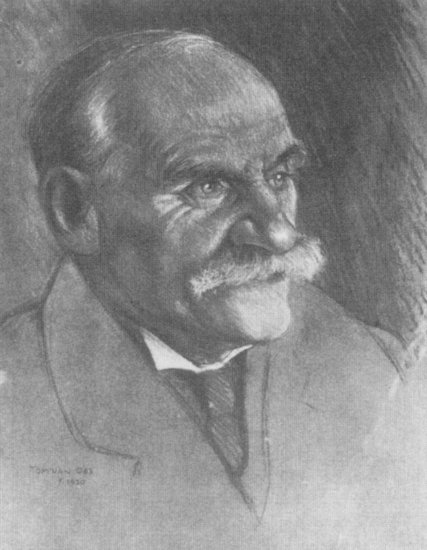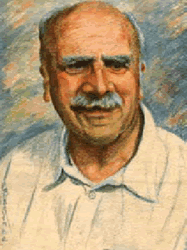<Back to Index>
- Physiologist John Scott Haldane, 1860
- Artist and Critic Alexandre Nikolayevich Benois, 1870
- Prime Minister of Portugal Vasco dos Santos Gonçalves, 1922
PAGE SPONSOR
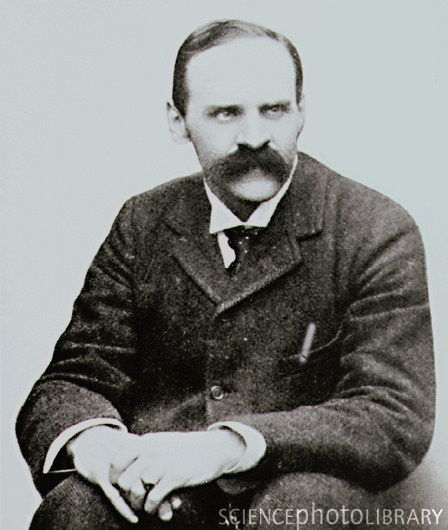
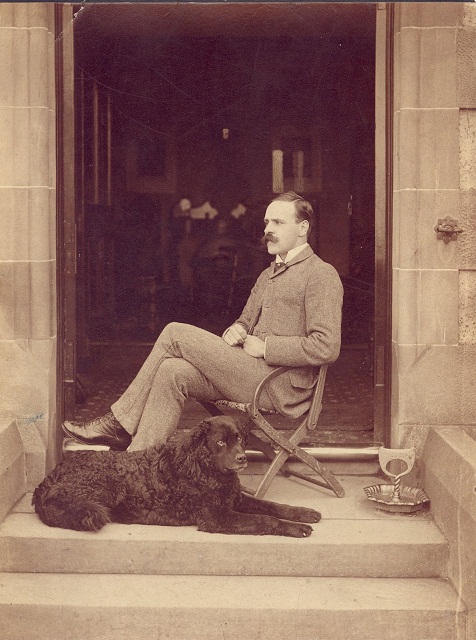
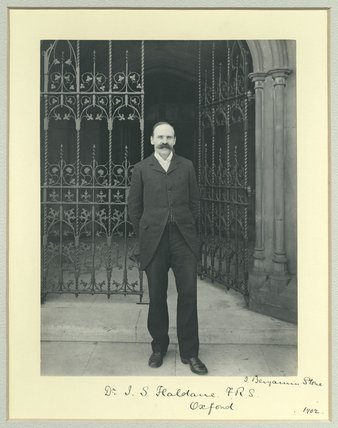
John Scott Haldane CH FRS (May 3, 1860 – March 14/March 15, 1936) was a Scottish physiologist famous for intrepid self - experimenting which led to many important discoveries about the human body and the nature of gases. He locked himself in sealed chambers breathing lethal cocktails of gases while recording their effect on his mind and body. He visited the scenes of many mining disasters and investigated their causes. When the Germans used poison gas in World War I Haldane went to the front at the request of British secretary of state, Lord Kitchener and attempted to identify the gases being used. One outcome of this was his invention of the first gas mask. His son, J.B.S. Haldane became equally famous, both by extending his father's interest in diving and as a key figure in the development of the modern evolutionary synthesis.
Haldane was born in Edinburgh. He was the son of Robert Haldane and the grandson of the Scottish evangelist James Alexander Haldane. His mother was Mary Elizabeth Burdon - Sanderson, the daughter of Richard Burdon - Sanderson and the granddaughter of Sir Thomas Burdon. His maternal uncle was the physiologist John Scott Burdon - Sanderson. He was the brother of Elizabeth Haldane, William Stowell Haldane and Richard Burdon Haldane, 1st Viscount Haldane.
Haldane attended Edinburgh Academy, Edinburgh University and the Friedrich Schiller University of Jena. He graduated in medicine at Edinburgh University in 1884.
He married Louisa Kathleen Trotter in 1891 and had two children; the scientist J.B.S. Haldane and the author Naomi Mitchison.
He was Gifford Lecturer in the University of Glasgow, Fellow of New College, Oxford, and Honorary Professor of the University of Birmingham. Haldane received numerous honorary degrees. He was also President of the English Institution of Mining Engineers, a Companion of Honor of the British Court, a Fellow of the Royal Society, a member of the Royal College of Physicians and of the Royal Society of Medicine.
Haldane died in Oxford at midnight on the night of March 14/March 15, 1936. He had just returned from a trip he had undertaken to investigate cases of heat stroke in the oil refineries in Persia.
Sir Henry Newbolt wrote a poem called "For J.S. Haldane", published in his anthology "A Perpetual Memory and other Poems" in 1939. Haldane was an international authority on ether and respiration and the inventor of the gas mask during World War I. (The Sciences and Philosophy: Gifford Lectures, University of Glasgow, 1927 – 28 by J.S. Haldane, Doubleday, Doran and Co., Inc., Garden City, NY, 1929) John Scott Haldane helped find out how to determine the regulation of breathing and discovered the Haldane effect in hemoglobin. He was the founder of The Journal of Hygiene. In 1907 Haldane made a decompression apparatus to help make deep sea divers safer and produced the first decompression tables after extensive experiments with animals. He was also an authority on the effects of pulmonary diseases, such as silicosis caused by inhaling silica dust. He investigated the principle of action of many different gases. He investigated numerous mine disasters, especially the toxic gases which killed most miners after firedamp and coal dust explosions. The toxic mixtures of gases found in mines included afterdamp, blackdamp and whitedamp. His description of the way a flame safety lamp can be used to detect firedamp by the increase in height of the flame, and chokedamp by the dying of the flame, is a classic exposition in his textbook, Respiration. Althoughy electronic gas detectors are now used widely in all coal mines,
flame lamps are still used extensively for their ease and simplicity of
operation. Electronic gas detectors rely on a catalytic chip which can
be poisoned by atmopsheric impurities. He identified carbon monoxide as the lethal constituent of afterdamp, the gas created by combustion, after examining many bodies of miners killed in pit explosions. Their skin was coloured cherry - pink from carboxyhaemoglobin, the stable compound formed in the blood by reaction with the gas. It effectively displaces oxygen, and so the victim dies of asphyxia.
As a result of his research, he was able to design respirators for
rescue workers. He tested the effect of carbon monoxide on his own body
in a closed chamber, describing the results of his slow poisoning. In
the late 1890s, he introduced the use of small animals for miners to
detect dangerous levels of carbon monoxide underground, either white
mice or canaries. With a faster metabolism, they showed the effects of
poisoning before gas levels became critical for the workers, and so
gave an early warning of the problem. The canary in British pits was replaced in 1986 by the electronic gas detector. Haldane
pioneered study of the reaction of the body to low air pressures, such
as that experienced at high altitudes. He led an expedition to Pike's Peak in 1911, which examined the effect of low atmospheric pressure on respiration. In
addition to his work on mine atmospheres, he investigated the air in
enclosed spaces such as wells and sewers. One surprising result of his
analysis of the air in the sewers beneath the House of Commons was
to show that the level of bacterial contamination was relatively low.
During this research, he investigated fatalities of workmen in a sewer,
and showed that hydrogen sulfide gas was the culprit.
